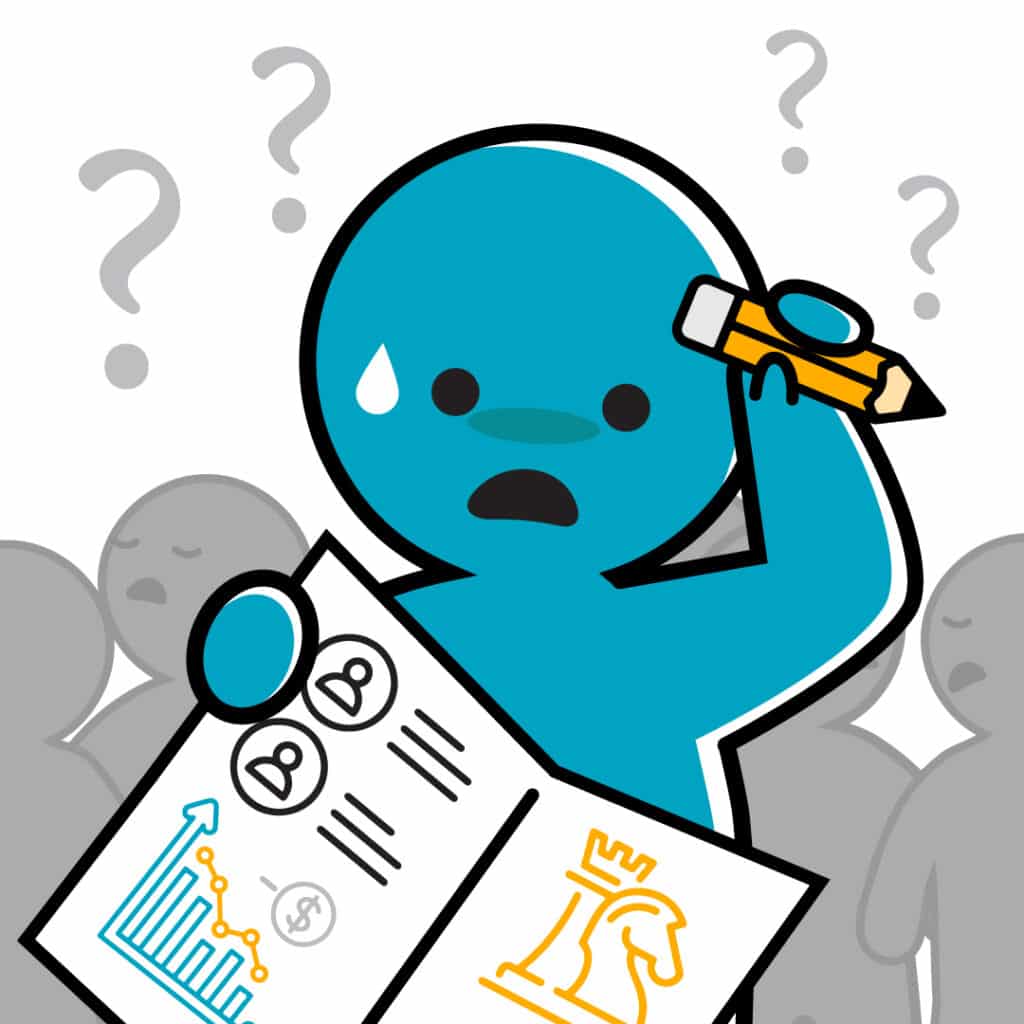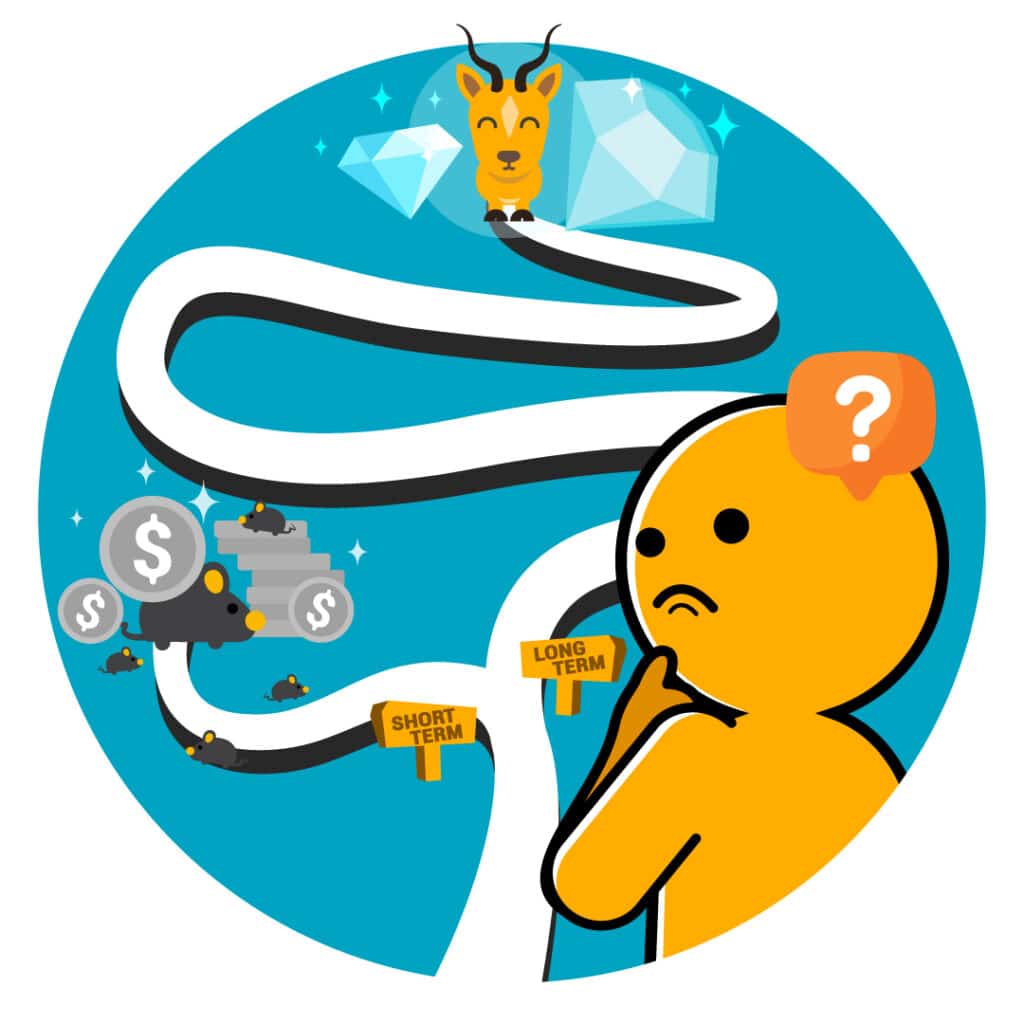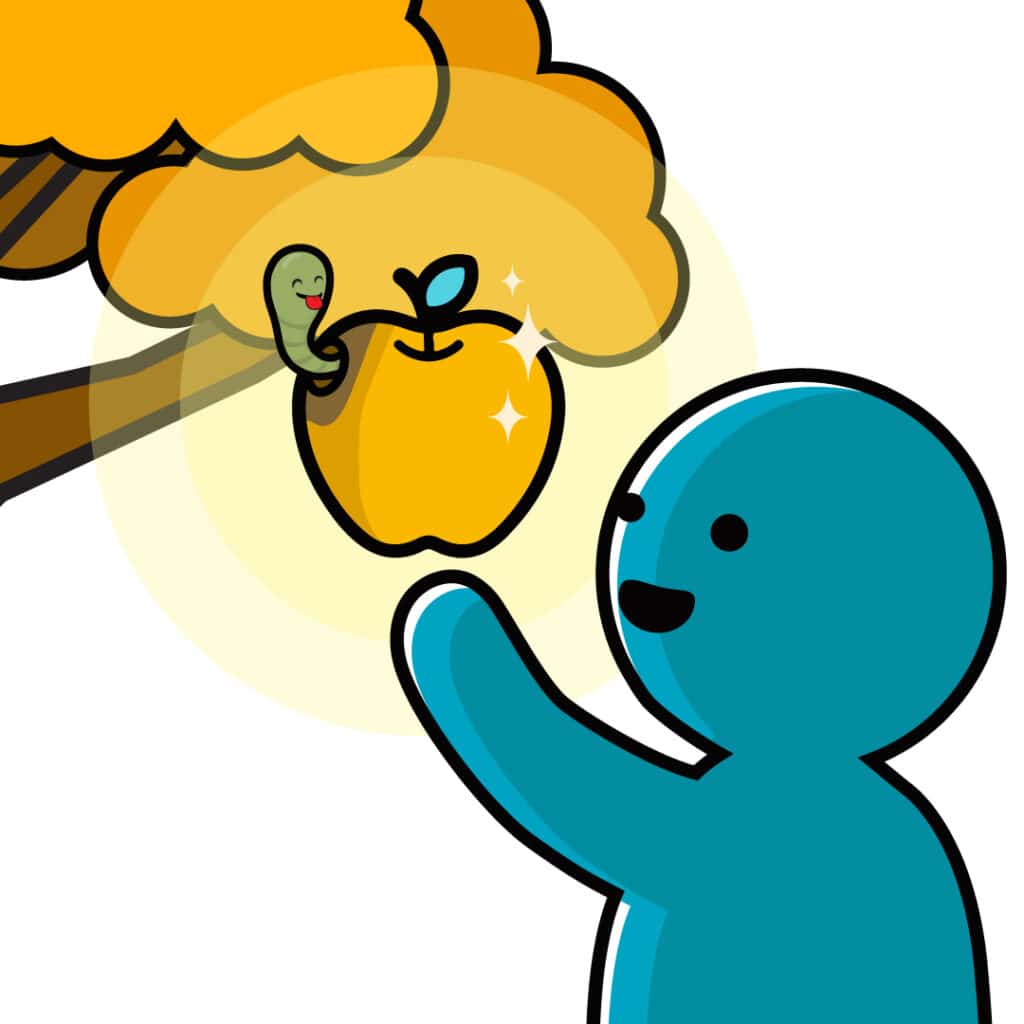Great Teams Don’t Just Play – They Prepare

It’s easy to romanticize “Hoosiers” as a Cinderella story – a scrappy underdog team fueled by heart and grit. But here’s the truth: grit alone doesn’t win championships. As we head into March Madness, I’m reminded by what Hickory’s Coach Norman Dale tells his team in that film: “I’ve seen you guys can shoot, but there’s more to the game than shooting. There’s fundamentals and defense.” And later, he reminds them: “If you put your effort and concentration into playing to your potential, to be the best that you can be, I don’t care what the scoreboard says at the end of the game, in my book we’re gonna be winners.” Coach Dale wasn’t always this kind of leader. Earlier in his career, winning was all that mattered to him. He believed that success was measured by the scoreboard alone. But after facing setbacks, he realized he had been misguided. His approach changed. He became a leader who valued the growth of his players more than just racking up points. That shift in perspective is one of the most powerful takeaways from “Hoosiers.” Winning isn’t just about raw talent or a single-minded pursuit of success. It’s about building a system, empowering a team, and focusing on the right fundamentals. What Are Your Credit Union’s Fundamentals? Coach Dale knew something many leaders forget – talent alone doesn’t win games. Systems do. Discipline does. Fundamentals do. And yet, he didn’t just focus on the basics in the same way everyone else did. He coached differently. He spoke differently. He set expectations for his players. The same applies to your credit union. What are your fundamentals? What are the non-negotiables that set the tone for your team’s success? Are you leading with a clear vision, or are you just assuming the fundamentals are in place without questioning them? Many people remember “Hoosiers” as a story of an underdog team that clawed its way to the top through sheer determination. But grit alone doesn’t win championships. An organization can think it’s focusing on fundamentals and still come up short. Why? Because fundamentals without leadership alignment are just empty motions. Coach Dale could prepare his team, but he couldn’t play the game for them. He set the standard and gave them the freedom to execute. In the end, it was the five young men on the court who had to work together, trust the system, and perform when it mattered most. At the end of the day, success is about whether you’ve built a team that can execute, adapt, and rise to the occasion when it matters most. That’s how championships are won. That’s how great credit unions are built. Are you leading like Coach Dale? Or are you just hoping for a lucky shot? Sharpening Skills, Strengthening Teams Even the best players need coaching, practice, and training. The same is true for your staff. If you want your credit union team to master the fundamentals and operate at their highest potential, investing in the right training is key. Need help coaching your team to success? Let’s talk. As Vice President of Brand Experience for Your Marketing Co., Frank Allgood works with credit unions to develop strong leaders, create effective training programs, and build powerful brands. Want to connect? Call 864.326.8740 or email [email protected].
The first rule of successful credit union marketing is…

The first rule of successful credit union marketing that you must remember is: You are inside of your credit union, looking out. Potential members are outside of your credit union, looking in. Your inside-looking-out perspective makes you blind in one eye. Confirmation bias makes you blind in the other eye. You cannot see yourself the way your potential members see you. You imagine they see you based on your mission statement, your policies and procedures, your good intentions, your employee training… You imagine that potential credit union members see you the way you want to be seen. You see those things—you care about those things! Your potential member doesn’t know or see them, not yet. And (GASP!) they don’t care. They have problems. Big problems. They have debt spiraling out of control, causing stress and anxiety. They are living paycheck to paycheck, wondering what to do when that one small emergency inevitably happens, and they don’t have the means to fix it. They worry they will miss their kids’ games, performances, and lives because they have to work overtime to make ends meet. Here’s the hard truth: When you’ve convinced your credit union marketing person to see your credit union the same way you do, that marketing person has nothing left to offer you but flattery—not results. Back in my radio days, this weathered, old ad guy once said something I’ve carried with me to this day: “Our industry is drowning in math and starving for ideas. We need people who can dream shit up. We need impractical, illogical people. We have plenty of data. We need more of the opposite. We have forgotten that the only unique benefits we can provide to clients is imaginative thinking and creativity. Everything else, aside from ideas, they can get somewhere else. Good ideas are good ideas. Things that are entertaining, interesting, and uplifting will always be attractive to everyone.” It comes down to the basic principles of advertising, and business in general. Some thoughts to consider: “Good inventors and designers (and marketers) deeply understand their customer. They spend tremendous energy developing that intuition. They study and understand many anecdotes rather than only the averages you’ll find on surveys.” – Jeff Bezos, Amazon “First principles is kind of a physics way of looking at the world. You boil things down to the most fundamental truths and say, ‘What are we sure is true?’ … and then reason up from there.” – Elon Musk, Tesla and SpaceX “Every moment in business happens only once. The next Bill Gates will not build an operating system. The next Larry Page or Sergey Brin won’t make a search engine. And the next Mark Zuckerberg won’t create a social network. If you are copying these guys, you aren’t learning from them… Indeed, the single most powerful pattern I have noticed is that successful people find value in unexpected places, and they do this by thinking about business from first principles instead of formulas.” – Peter Thiel, PayPal Credit union marketing strategies are successful when we remember these basic principles. Your members aren’t looking for a product or a service. They are looking for transformation. They are looking for a solution. They want a hole in the wall but need the hammer to make it happen. In short: Don’t try to convince your members and potential members to think and feel like you do. Learn how to think and feel like them.
What’s wrong with my credit union team?

Ego Is the Enemy is not just a book by marketing expert Ryan Holiday – it’s a truth that applies to almost any organization. For nearly 20 years, I’ve facilitated many credit union strategic planning sessions and worked with hundreds of credit union leaders to help grow their credit unions. What is the most common obstacle to success? Team members with an ego. It shows up in different ways in different people, but ego is always the enemy to the success of your organization. The team member who chooses status quo over necessary change because it is uncomfortable for them, despite being necessary to the organization’s success and survival. The team member who makes the situation about themselves instead of the team. The team member who, for whatever reason, plays the arsonist and becomes the cancer infecting the entire organization’s culture. The team member who dominates conversations with “blah, blah, blah” because of their fragile confidence. Or the team member who chooses not to delegate because (they feel) no one can do that task as good as they can, so the answer for everything eventually becomes “I don’t have time.” Ego is the enemy. In your next meeting, listen with intent to see who is contributing and what they are contributing. Then, reflect on this quote from Les McKeown about what he calls the Enterprise Commitment: “When working in a team or group environment, I will place the interests of the enterprise above my personal interests.” When we (and your team) can say those words and speak truth while saying them, there is not much you cannot accomplish. When we remove ego, we’re left with what is real. What replaces ego is humility, yes—but rock-hard humility and confidence. Whereas ego is artificial, this type of confidence can hold weight. Ego is stolen. Confidence is earned. Ego is self-anointed, its swagger is artifice. One is girding yourself, the other gaslighting. It’s the difference between potent and poisonous. – Ryan Holiday
James Carville, Newt Gingrich, and Credit Union Strategic Planning

James Carville and Paul Begala, two of the brightest brains behind President Bill Clinton’s administration, authored a book that has some great insights for all leaders. Despite being political enemies in the 90’s, Buck Up, Suck Up… and Come Back When You Foul Up: 12 Winning Secrets from the War Room includes a story about Newt Gingrinch that every leader should read and heed—especially when it comes to credit union strategic planning. Here’s the excerpt: Newt Gingrich is one of the most successful political leaders of our time. Yes, we disagreed with virtually everything he did, but this is a book about strategy, not ideology. And we’ve got to give Newt his due. His strategic ability—his relentless focus on capturing the House of Representatives for the Republicans—led to one of the biggest political landslides in American history. Now that he’s in the private sector, Newt uses a brilliant illustration to explain the need to focus on the big things and let the little stuff slide: the analogy of the field mice and the antelope. A lion is fully capable of capturing, killing, and eating a field mouse. But it turns out that the energy required to do so exceeds the caloric content of the mouse itself. So a lion that spent its day hunting and eating field mice would slowly starve to death. A lion can’t live on field mice. A lion needs antelope. Antelope are big animals. They take more speed and strength to capture and kill, and once killed, they provide a feast for the lion and her pride. A lion can live a long and happy life on a diet of antelope. The distinction is important. Are you spending all your time and exhausting all your energy catching field mice? In the short term it might give you a nice, rewarding feeling. But in the long run you’re going to die. So ask yourself at the end of the day, “Did I spend today chasing mice or hunting antelope?” So I ask: Where is your energy being spent? On field mice or antelope? It’s easy to bask in the success of a small victory, but did you really accomplish anything? The YMC strategic planning process is built around helping your credit union find and attack the antelope for big wins that fuel real growth. Are you ready to take that next step? Email Bo, and let’s get hunting.
A Credit Union Leader’s Guide to Managing Disappointment

Expectations can lead to disappointment… But that’s no excuse to avoid them! Ducking out of setting expectations because you fear being seen as a tyrant or dread disappointment is a cop-out. And if you have the viewpoint that “no one cares about expectations anymore,” then you need to do some serious soul searching. If you’re serious about leading your credit union to success, you must set expectations. It is non-negotiable. Expectations drive performance and establish clear standards. The challenge, however, is in how you set expectations, and understanding what unmet expectations actually are. Expectations should be dynamic, not static and forgotten. When setting them, it’s vital to avoid absolutes, like “never” or “always,” and to maintain a strong connection to your team. But before setting your expectations, ask yourself how you expect to feel when they are met. Understanding how you expect to feel when expectations are met clarifies your motivation and ensures they align with your goals. It helps ensure you set realistic expectations and avoid overcommitment. This reflection enhances self-awareness and empathy, guiding actionable steps toward fulfillment. It also improves overall satisfaction and well-being by focusing on what truly matters to you. Of course, unmet expectations hurt. They scream that something isn’t working. Use disappointment as a wake-up call. It’s not a failure—it’s a sign to switch gears and innovate. Dig deep to uncover the root causes and unmet needs behind the disappointment. This is where real growth and innovation happen. Push your team – and yourself – toward greatness. Anticipating the emotional outcome fosters resilience and adaptability if expectations are not met. Ultimately, it ensures that your efforts lead to genuine satisfaction and personal growth. When disappointment strikes, control your reactions. Don’t dump your emotional baggage onto your team. Ensure your expectations are built on mutual respect. Shallow relationships can’t support deep expectations. Embrace disappointment as a badge of courage and a steppingstone to growth. Actionable Strategies for Credit Union Leaders Setting expectations is essential for leadership, but true leadership is about learning and growing when expectations are not met. Embrace disappointment as a catalyst for adaptation and growth. By doing so, you’ll not only elevate your team but also drive your credit union to unprecedented heights. Lead with authority, adapt with agility, and watch your team soar. If you’re looking to set and achieve goals that enhance your credit union culture and improve team dynamics, YMC is here to help. We can develop targeted strategies and implement effective practices that will transform your workplace into a thriving environment where your culture and teams excel. As Vice President of Brand Experience for Your Marketing Co., Frank Allgood works with credit unions to develop strong leaders, create effective training programs, and build powerful brands. Want to connect? Call 864.326.8740 or email [email protected].
What Trumps Culture? Understanding the Impact of Team Dynamic

You’ve heard the Peter Drucker quote, “Culture eats strategy for breakfast.” It’s a simple way to say the overall vibe and values within a credit union have a stronger impact on success than the best-laid plans or tactics. But is there something that eats culture? The most brilliant strategy at a credit union doesn’t stand a chance with a culture that is negative or misaligned. A healthy culture promotes adaptability and resilience, enabling organizations to better navigate change and unexpected challenges. When the culture is strong, employees are more likely to be aligned with the credit union’s vision and mission. And we know that a positive culture attracts top talent. A study by Glassdoor found that 77% of people consider a company’s culture before applying for a job, and 56% rank a good workplace culture as more important than salary. So, while we know culture is important, something does, in fact, eat culture. Teams. Culture refers to the shared values, beliefs, norms, and practices that characterize an organization. Amazon has a “customer obsession” culture. Salesforce’s culture is built around the concept of Ohana, meaning family. Airbnb’s culture? Belonging. Patagonia fosters a culture of environmental responsibility. Now, if only it was as easy as finding employees that identify with the core values and principles within each of these company’s culture – as distinct as they are. A strong organizational culture is the underlying fabric of your credit union, but that’s just it: It’s the backbone. The foundation. The framework. It’s not the trenches. Culture is an abstract, pervasive force shaping overall behavior, whereas teams are groups of individuals who come together to achieve specific goals or tasks. They are cross-functional, department-specific, or project-based. Team dynamics are influenced by the member’s skills, personalities, and the team-leader’s style. When it comes to staffing challenges at your credit union, a powerful culture will attract employees, and poor team dynamics will drive them away. Conflict, lack of collaboration, poor management practices, workload imbalance, lack of recognition, etc. are what cause employees to leave. And yes, you can have an organizational culture that sets the tone and values of the credit union and still fails miserably with teams. So, where do you start? Assess Team Dynamics This often starts with getting out of your own head. Too often, we fall into the trap of reverting back to a culture as “the fix.” It may fix the problem… but it may not. Instead, observe team meetings and interactions to identify any viable issues or conflicts. Distribute surveys or conduct feedback sessions to gather input from employees about team interactions, communication, workload, and leadership. Develop an Action Plan From improving communication to enhancing collaboration to reducing conflicts, set clear, measurable goals. Develop and implement training programs focused on team dynamics, and plan regular, team-building activities to strengthen relationships and foster a sense of unity. Monitor Progress and Adjust Establish ongoing feedback loops where employees can provide input on the effectiveness of implemented changes. Schedule regular check-ins with teams to discuss progress, challenges, and any new issues that arise. It is okay to adjust the action plan. Note Well: As leaders, guide your teams to find the best solutions; do not do it for them. After all, being in the trenches, they may be aware of more than you. Both culture and team dynamics are crucial. They are two sides of the same coin. A positive culture sets the tone and values, creating an environment where employees feel connected and motivated. It is the quality of team interactions, leadership, and collaboration, however, that directly impacts their daily work experience, and ultimately their decision to stay or go. If you need help enhancing your credit union culture or improving team dynamics, YMC is here to assist. We can develop strategies and implement practices to transform your workplace into an environment where both culture and teams flourish. As Vice President of Brand Experience for Your Marketing Co., Frank Allgood works with credit unions to develop strong leaders, create effective training programs, and build powerful brands. Want to connect? Call 864.326.8740 or email [email protected].
Abandon Ship? Why Frequency is Your Brand’s Lifeboat

When a credit union leader says they want to do a short run on a campaign, my initial response is, “Are we swimming or treading water?” Unfortunately, too many credit unions are only looking to dip their toe in the water. Let me explain. As someone who lives in the Carolinas, I’m very aware that FanDuel and DraftKings have arrived in North Carolina. With the legalization of online sports betting in the Tar Heel State on March 11, these two powerhouse brands blitzed almost every streaming and media service provider imaginable over the past 60 days leading up to the deadline, including pre-registration bonuses and influencer marketing. Of course, the key to their short run campaign was frequency. And, oh boy, have both FanDuel and DraftKings poured a ton of money into acquiring new customers during the initial launch phase. By contrast, we know of a credit union in the Rocky Mountains region of the United States that identified a new market two hours away from their homebase in another state. They boasted that if a FinTech can enter a new market without a physical branch, so could they. They talked a good game with an “all in” attitude. Unfortunately, their strategy and budget said otherwise. Their campaign burned hot and fast, and they were out within 45 days with little to show for their efforts. Short run campaigns that are most successful for credit unions tend to be experiential marketing, where there are pop-up events or interactive experiences that generates excitement or media buzz. A promoted flash loan or limited time deposit special can also drive engagement, but only when it is supported by a high level of frequency. In a short timeframe, you need to build familiarity, create a sense of urgency, overcome competition, and ensure your audience can absorb your messaging. There’s the old “Marketing Rule of 7,” which suggest someone must see or hear a message at least seven times before they’ll commit to act. With modern attention spans, I would suggest we are well beyond seven touch points. We must take a more strategic approach and dig deeper into the platforms our target audience frequents and consider campaign pacing and clear messaging. By contrast, long-term campaigns help build brand awareness, foster trust and creditability, and can change perceptions about your credit union. Here’s the kicker: Your true adversary isn’t your competitors, it’s obscurity. To increase market share, you need to increase your presence and credibility, and that only comes with a long-term strategy where you are not just selling what people want, but rather you are positioning what matters most to your target audience. If I were to ask you, “What brand is associated with happiness,” the answer is Coca-Cola. Go ahead. Google it! Only, Coca-Cola ended their “Open Happiness” campaign in 2016. So, why does is still resonate with us? That campaign ran for seven years. It’s successor, “Taste the Feeling,” which is going on eight years, emphasizes the experience of the product itself, but compliments the idea that Coke brings happiness. When it comes to your credit union’s brand story, let’s not just tell it for 60 days but for a lifetime. As Vice President of Brand Experience for Your Marketing Co., Frank Allgood works with credit unions to develop strong leaders, create effective training programs, and build powerful brands. Want to connect? Call 864.326.8740 or email [email protected]
Help Your Team Get More Stuff Done

Is your team brimming with excitement, engagement, and fervor for their roles? Distractions, interruptions, and inefficient workflows can hinder even the most exceptional credit union teams. Surprisingly, we’re quick to turn to perks and incentives to keep people motivated rather than practical steps to improve productivity. Why is that? We encounter statistics, such as those highlighted in Slack’s 2023 State of Work survey, indicating that 82% of employees identify feeling happy and engaged at work as a pivotal factor influencing productivity. So, we throw more toward things such as casual dress codes, wellness programs, and free food. It is often structure, however, that reduces fatigue, stress, and anxiety, which leads to happiness. Maybe, just maybe, we have things backwards. So, before you start the conversation about offering free yoga classes, what’s holding your credit union back? Here are three practical ways to help your employees get more stuff done. Dive into the Flow Zone You know those days when your team is juggling a dozen different tasks at once, feeling like they’re barely keeping their heads above water? Encourage your team to batch similar task together. By focusing on one type of task at a time, your team can minimize distractions and maximize efficiency. What specific tasks or processes are causing bottlenecks or delays within the credit union? Are there any communication breakdowns or misunderstandings contributing to any workflow issues? Work with your team to get to the root cause of workflow problems. Champion Service Excellence Every interaction with a member is an opportunity not just to provide outstanding service but also to upsell or cross-sell. Encourage your team to listen closely to a member’s needs and preferences, and empower them to suggest relevant products or services that could enhance the member’s experience. Championing service excellence isn’t just about solving problems. It’s going above and beyond to wow your members and keep them coming back for more. Utilize Downtime Strategically Empower your credit union personnel to excel in their roles by using those quieter moments to foster a culture of learning and improvement. This can be regular professional development sessions, online learning training modules, or knowledge sharing sessions where teammates can share insights, experience, and best practices with colleagues. It’s important to remember that downtime is important for creativity, self-improvement, and rest and recovery. It is not meant for catchup work. If you are using downtime for busy work, you’re denying growth opportunities. Set the Tone Which of these strategies can you start immediately? Remember: Leaders who demonstrate high levels of productivity inspire and motivate their team members to do the same. Leading by example shows that productivity is valued and expected within the organization. As Vice President of Brand Experience for Your Marketing Co., Frank Allgood works with credit unions to develop strong leaders, create effective training programs, and build powerful brands. Want to connect? Call 864.326.8740 or email [email protected].
Personal Growth for Credit Union Professionals

Reflecting on the Year That Was As the year draws to a close, there’s a natural urge to shift our focus to the future. Before you do… what story did this past year tell? How have your chapters unfolded? Let’s not overlook the art of personal reflection. It can illuminate your path forward and pave the way for a more intentional and prosperous new year. Before we begin, let’s laydown a ground rule. There are some common barriers and excuses used by credit union professionals. Blaming the economy, time constraints, and comparison to others can distract us from gaining clarity. When we focus on external factors as the cause of our problems, we adopt a victim mentality. A negative mindset can hinder personal growth and professional development. Instead, let’s focus on empowering personal responsibility. Celebrate Your Wins No matter how big or small, you’ve made progress. As a credit union professional, you’ve made an impact on your member’s lives. List your accomplishments and milestones. Consider any feedback or recognition you received from colleagues, supervisors, or clients. Revisit goals you set for yourself. Even if they weren’t fully met, partial success can still be considered a win. Remember: Progress, not perfection. Learn from Setbacks Setbacks and challenges provide valuable lessons that can help you grow both personally and professionally. Assess the root causes. Was it a lack of a specific skill, poor decision-making, procrastination or maybe difficulty in setting priorities? Perhaps it was excessive workloads, lack of setting boundaries, communication issues, or negative self-talk. Resilience is a key trait in personal growth. Identify what went wrong and how you can improve in the future. Prioritize Your Well-Being Are you well-rested, healthy, and happy? Take time to assess your physical and mental health. This could involve regular exercise, mindfulness practices, or simply spending more time with loved ones. As you start to tell yourself “yes,” you will also need to learn to say “no” to things that zap your time and energy. Note Well: Sometimes well-being can be used as an excuse for not getting things done. You can over-schedule self-care. You can use it as escape from responsibilities or as a source for external validation or sympathy from others. You can even overly focus on well-being to the point of perfectionism. Seek a healthy equilibrium by setting realistic goals. Seek Feedback Seeking feedback opens us up to the potential for disapproval, which is why we rarely ask for it. Too often we can’t seem to separate self-worth from feedback. The truth, however, is you develop a growth mindset when you view feedback as an opportunity for learning and growth. When you ask for feedback regularly, you’ll become more comfortable with it over time. You do not need to wait for your next performance review to ask for it. When asking for feedback, request specific and actionable suggestions. This can make feedback feel less intimidating and more practical. Embrace Change with Gratitude Change is an inevitable part of life, and how we embrace it can greatly influence our personal growth. Meanwhile, gratitude is a practice that involves acknowledging and appreciating the positive aspects of our lives, both big and small. By embracing change with gratitude, you will improve relationships, become more resilient, and find yourself more prepared for circumstances and challenges that lie ahead. Remember this: the past year’s victories or setbacks have shaped the credit union professional you are today. With a resilient spirit and commitment to personal growth, you can take on this new year as an opportunity to write new chapters. Embrace the upcoming year with open arms, and make it your best year ever. As Vice President of Brand Experience for Your Marketing Co., Frank Allgood works with credit unions to develop strong leaders, create effective training programs, and build powerful brands. Want to connect? Call 864.326.8740 or email [email protected].
The Pandemic of Nice is Not Working Out

I’ve had a recurring theme in conversations with credit union leaders this year. “Bo, I just don’t know if all my staff is on board. I don’t know if they are a good fit to take us to the next level, where we’re going.” OUCH! That is a touchy conversation. But the fact that these credit union leaders recognize the problem is a great first step. Perhaps you’re thinking the same thing but afraid to verbalize it to your team or board. Perhaps deep down you’re really frustrated but refuse to bring it up to avoid tough conversations. As a credit union leader, it can be easy to make excuses and trick yourself into thinking that allowing underperforming and unengaged employees to stay on your team is the kind and generous thing to do. “Well, Sally has been here 23 years…” It’s not. It doesn’t help your credit union, your members nor the rest of your credit union team. In fact, I’ll share with you the tough words one mentor had for me on this subject: It’s selfish. Just because you hate having tough conversations, doesn’t mean the entire rest of your organization, members and your mission should suffer. Here are some outcomes I have personally experienced because of this very scenario, and what I have observed from other credit unions: 1. Good team members become toxic. Your culture is defined by the worst behavior you are willing to tolerate. “Why should I work my ass off and give 110% when Sally is as productive as a Ficus tree?” You start to either lose productivity from good team members, or they go somewhere else that has a team of high performers to match their energy. Opposite that, when team members see that good work is rewarded and bad work has no place, they’ll know that they’re at an organization that’s worth staying at. It’s easy to think that firing an employee puts other employees on edge. More often, it sends a signal to the good employees that you’re on their side and don’t want them to spend time compensating for underperformers. 2. You’re holding that person back. Keeping someone on your team that isn’t a good fit isn’t just holding your credit union, but also, it’s holding that person back. There’s a good chance that person is very unhappy and is as afraid to make that decision as you are. There’s only so many working years someone has ahead of them. 3. You and your team begin to think differently. There is not one person that has been fired from my organization because I woke up one day in a bad mood. I always use the word CHOOSE. If you have updated and specific job descriptions (we call them KRAs or Key Result Areas), expectations for work and what success looks like will be clear. If you have an underperforming team member, first look to yourself and ask some tough questions. Are your expectations not clear? Have you failed to provide training or tools to make them successful? If you get past those questions, you turn your questions toward the underperforming team member. “Why are you choosing not to do the work?” This question allows you to not be the bad guy but focus specifically on the choice the team member is making to not do the work to achieve the desired results. 4. You’re wasting time. You have good team members who are craving your time and attention to grow and prosper in their position and become a better asset to your team. Instead, you are spending time having the same conversations with the same underperforming team members. You waste time on conversations with no outcomes and headspace in the “what if” scenarios that you have no intention of acting on. Let me give some clearly defined solutions if you find yourself in this place right now:1. Update your job descriptions. Make sure expectations of both task and outcome are clearly defined so there is no wiggle room when review time comes around.2. Speak up. Don’t avoid tough conversations. When a team member at your credit union is not living up to their potential and dragging the team down, talk about it. Identify the problem and what the desired behavior is and give a timeframe for when the performance should turn around.3. Hold your leadership team accountable. Sometimes it’s not a team member issue, it’s a leadership issue. What does all of this have to do with credit union marketing? Marketing is a team sport, and if you are spending money on marketing and bewildered as to why no matter what you try you just can’t find success, it may be a cultural issue that needs to be dealt with. Leads may be coming in for new loans and new members but lost to a poor first experience with your credit union because of an underperforming on disengaged team member. That’s a lot of credit union marketing dollars wasted! Every member experience can either build or kill your credit union’s brand and negate your marketing. Ready to discuss real change for success? Let’s talk!










